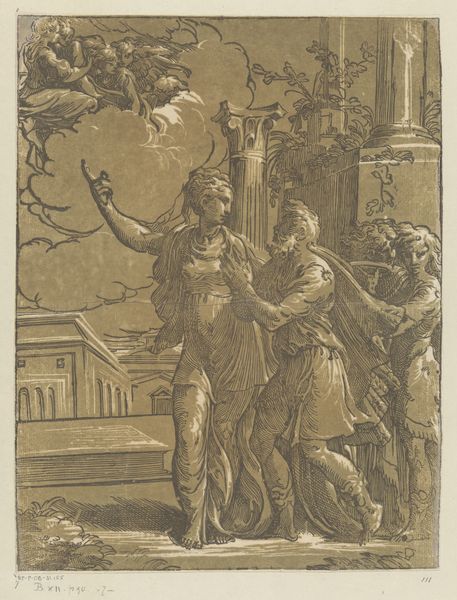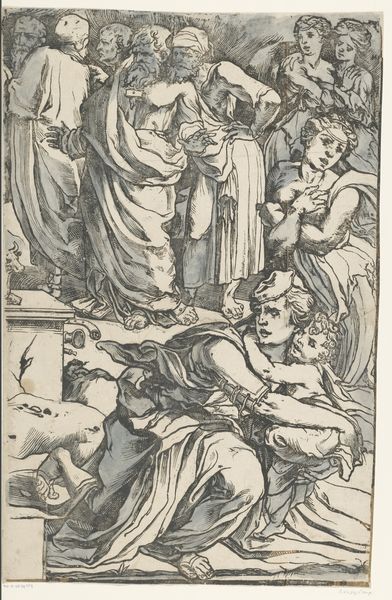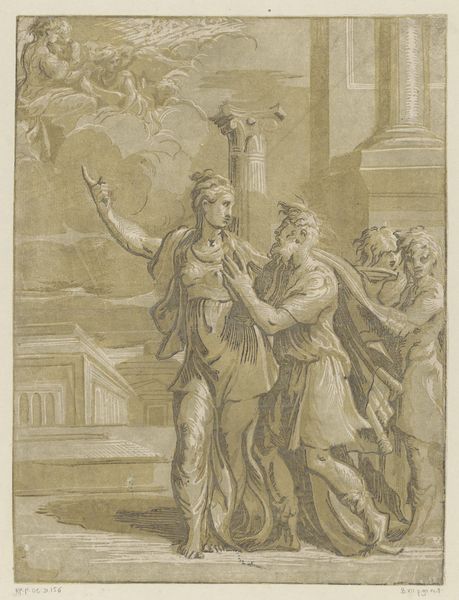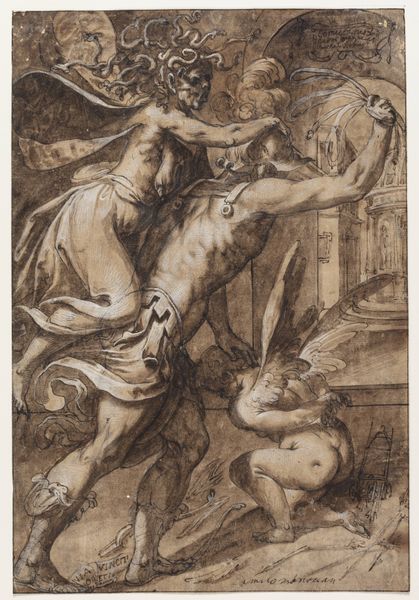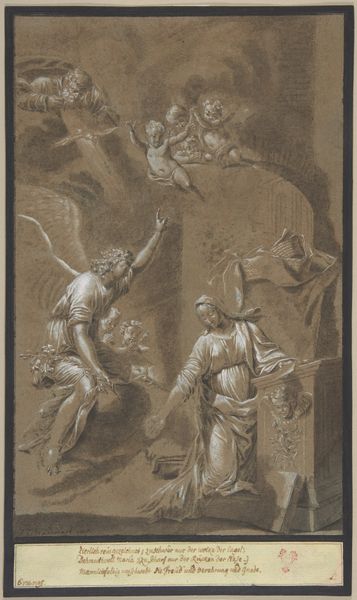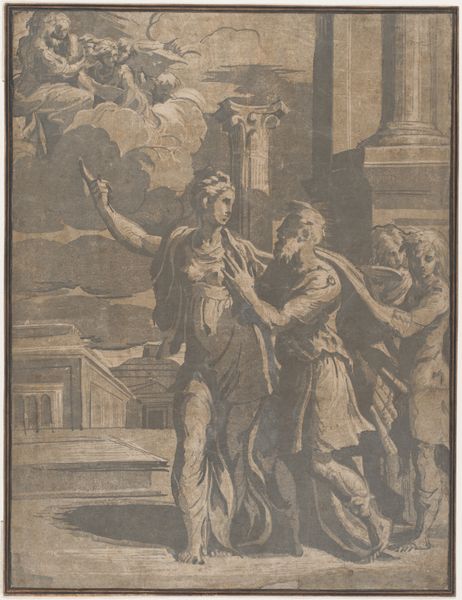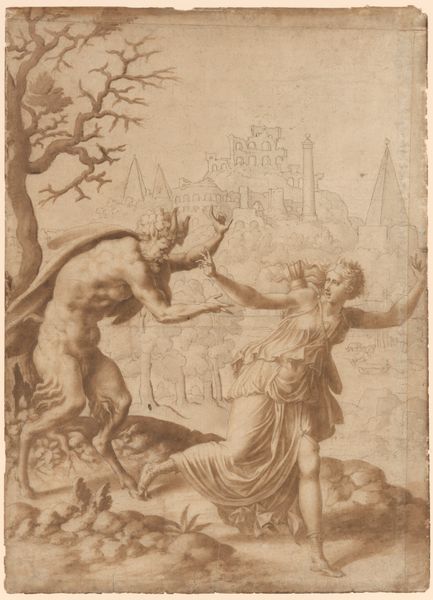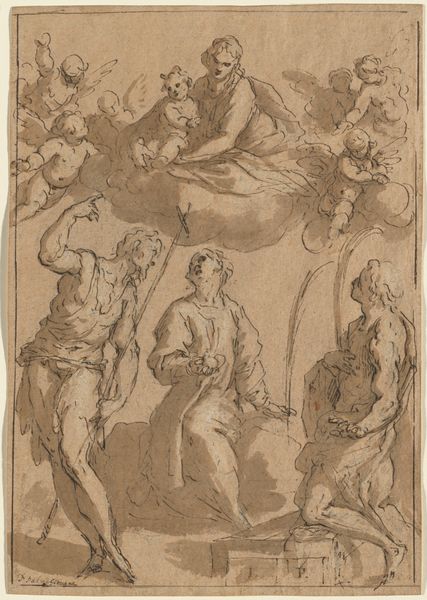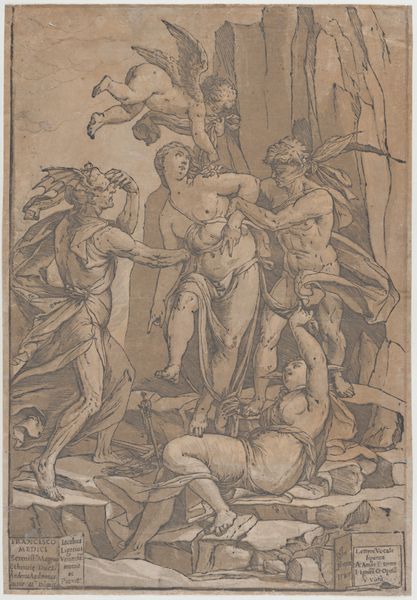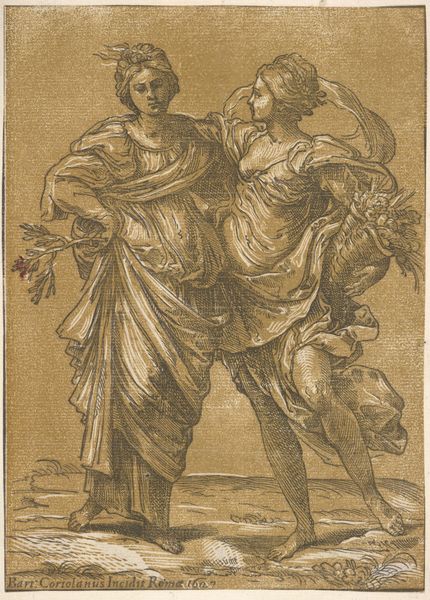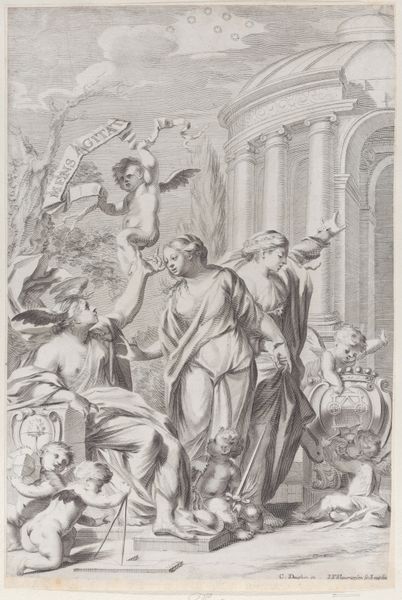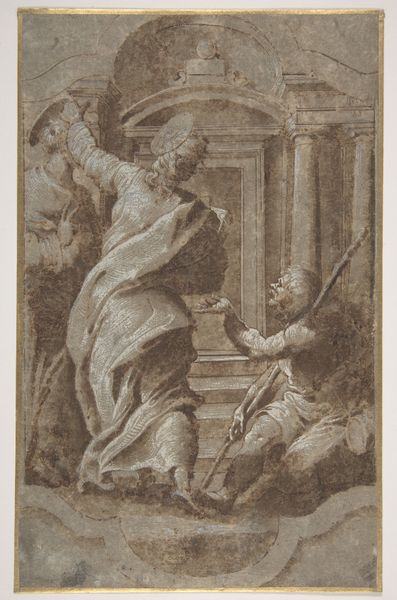
Augustus og den tiburtinske sibylle 1500 - 1550
0:00
0:00
antoniodatrento1
SMK - Statens Museum for Kunst
print, engraving
#
narrative-art
# print
#
figuration
#
history-painting
#
italian-renaissance
#
engraving
Dimensions: 340 mm (height) x 269 mm (width) (bladmaal)
Editor: Here we have Antonio da Trento's engraving, "Augustus and the Tiburtine Sibyl," created sometime between 1500 and 1550. The ochre tones give it an aged feeling, like a memory. What symbolic language jumps out at you? Curator: Well, the composition itself is fascinating. We have Augustus, a Roman Emperor, being shown a vision of the Virgin and Child by the Sibyl, a prophetess. Notice how Augustus is presented— almost hesitant, needing to be ushered forward. Editor: Yes! He looks…reluctant. What could that symbolize? Curator: Think about it. Augustus, a figure of immense power in the Roman world, is being shown a future that supersedes his own. It's the dawn of Christianity eclipsing the Roman Empire. This humility is not just personal; it speaks to a larger shift in cultural power. The clouds, framing what's coming, act almost as a stage for this important moment. Editor: The Roman architecture crumbling in the background underscores that, right? Like the old order is fading? Curator: Exactly! And see how the Sibyl is positioned, hand raised, mediating between these worlds. She embodies the bridge between pagan prophecy and Christian revelation. Editor: It’s incredible how much narrative is packed into one image, and how the artist uses composition and symbolism to convey such a complex message about the transition of power and belief! I’ll definitely be looking for similar visual cues in other Renaissance works now. Curator: Indeed! Images like this remind us that art serves as a potent carrier of cultural memory, constantly reshaping how we understand our past and anticipate our future.
Comments
No comments
Be the first to comment and join the conversation on the ultimate creative platform.
